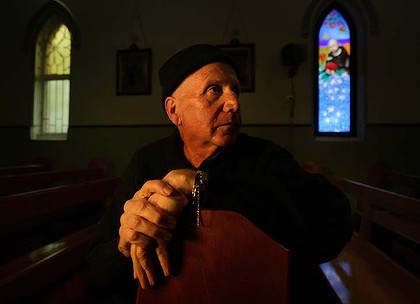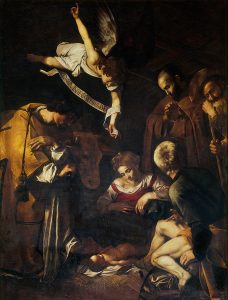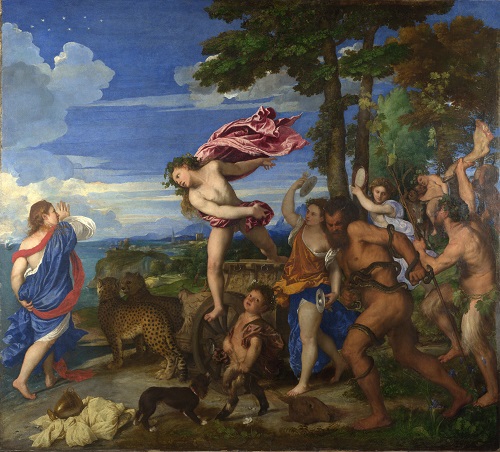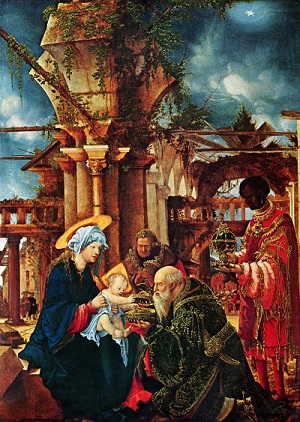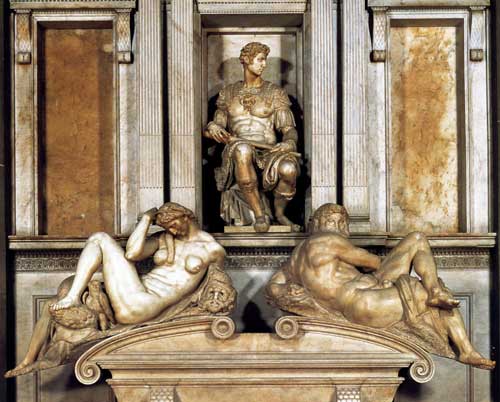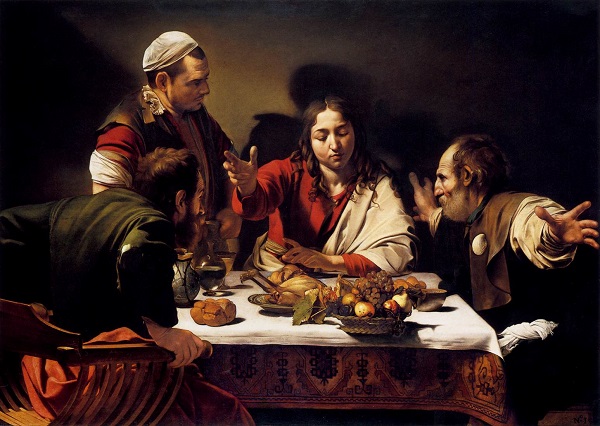
I wanted to share this painting with you albeit that Carravaggio is recognised as an Italian Baroque master rather than a Renaissance master.
Carravaggio (b.1571) is probably more well known for his David with the Head of Goliath and for his wild and turbulent life but this painting of the Supper at Emmaus 1601 (located in the National Gallery, London) is quite extraordinary. The basis of this painting is of course the gospel story, told by St Luke (24:13-32) of the meeting of the two disciples with the resurrected Christ. The disciples do not recognise Christ until he breaks and blesses the bread because, according to St Mark (16.12) Christ appeared to them “in an other form”. Caravaggio therefore chooses to paint the risen Christ without a beard, almost as a youth.
The animation of the disciples at the moment of recognition caught here by Caravaggio is almost palpable. However, what interests me is that the focus of the viewer is almost not on Christ or the disciples but on the still life table of food and wine – the glasses, bread and fruit, poultry and vine leaves, with one bowl almost falling to the ground without the notice of the dinner guests. The still life of the food and wine has a tranquillity about it which offsets the suddenness of the recognition by the disciples. The food and wine also suggest a celebratory dinner forgotten in the emotion of the event portrayed.
Carravaggio did paint another Supper at Emmaus in 1606 which is much more restrained both in the figures portrayed but interestingly also in the still life image of the table.
I hope you enjoy this piece of reflection.



